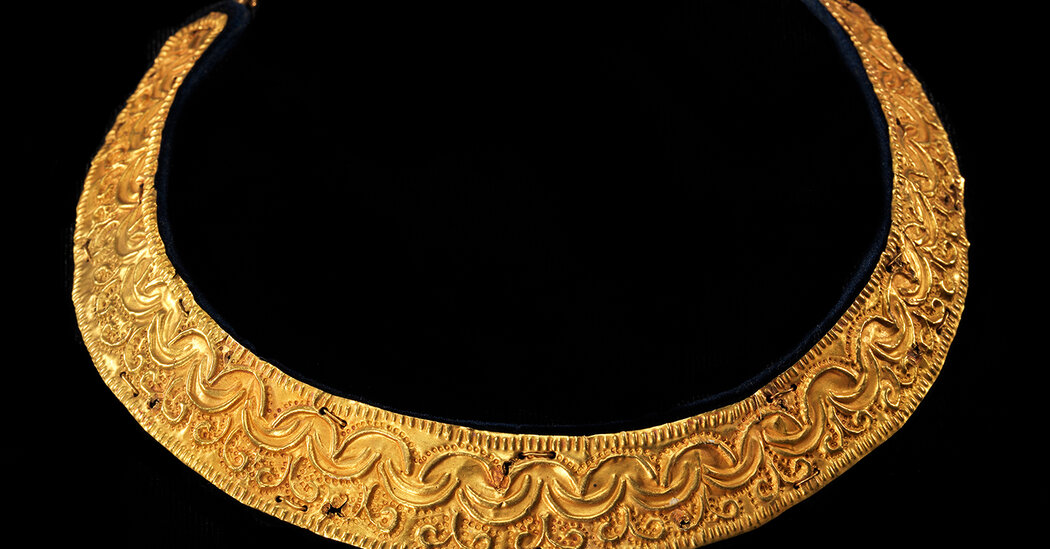Seven items taken from the Asante Kingdom in West Africa by British forces during a 19th-century conflict were returned to the Asante king in what is now Ghana on Monday by officials of the Fowler Museum at U.C.L.A.
The museum, which focuses on the cultures of Africa, Asia, the Pacific and the Indigenous Americas, had received the items in 1965 as part of the largest gift in its history, a collection of some 30,000 objects from a trust in the name of the benefactor, Sir Henry Wellcome, a British pharmaceutical entrepreneur and artifact collector.
The Sir Henry Wellcome Collection forms the core of the African and Pacific holdings at the museum, which was founded in 1963 as the Museum and Laboratories of Ethnic Arts and Technology.
On Monday, in the Ghanaian city of Kumasi, the Fowler’s director, Silvia Forni, and two other museum staff members delivered the objects, including gold jewelry, an elephant tail whisk and an ornamental chair, to Otumfuo Osei Tutu II, the 16th Asante king.
Forni said in a statement that the transfer was part of a shift from viewing museums as “collecting institutions entitled to own and interpret art based primarily on scholarly expertise, to the idea of museums as custodians, with ethical responsibility” to art objects and to the communities where they originated.
Over the past few decades museums across the United States and Europe have returned items, some of them the bounty of foreign conquests or contraband smuggled by artifact hunters. In some cases institutions agreed to turn over items after being confronted with evidence that they had been stolen. In other cases, federal or state authorities have seized and returned objects.
Fowler museum officials said this return of the seven objects was voluntary and the product of its own scholarship, which was funded by a Mellon Foundation grant.
The museum’s research into its colonial-era African collection found that the seven items from the Wellcome collection had been either looted or acquired under onerous terms from the Asante in 1874 during the Sagrenti War, which is also known as the Third Anglo-Ashanti War.
According to the museum’s research, four objects — the whisk; a chair made of wood, brass, leather and iron; and two bracelets or anklets — were taken on Feb. 5, 1874. Three others — two gold stool ornaments and a gold necklace that were in the personal collection of Asantehene Kofi Karikari, the Asante ruler — were said to have been transferred to British forces as part of an indemnity payment outlined in the Feb. 13, 1874, Treaty of Fomena, which required a payment of 50,000 ounces of gold.
The Fowler said that one of the gold stool ornaments was sold later in 1874 during a sale of Asante objects at Garrard & Co., a London jeweler. It was purchased by Wellcome at an auction at Glendining & Co. in 1928.
Wellcome bought the tail whisk during the same auction, the museum said. That item, the museum added, appeared to have been looted from the palace in Kumasi by an officer fighting with the British forces in February 1874.
The British Museum and the Victoria and Albert Museum announced plans in recent weeks to also return items that once belonged to the Asante royal court, but on a loan basis. The items of gold and silver, also said to have been taken by the British army during colonial wars, are set to go to the Manhyia Palace Museum in Kumasi.
The Fowler said that its returns were permanent, but that it had “3-D scanned” the seven objects with permission of the Asante royal palace and commissioned replicas by Ghanaian artists that would continue to be displayed.


